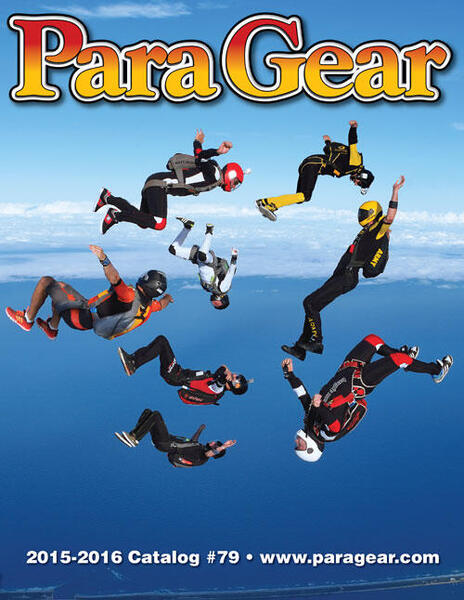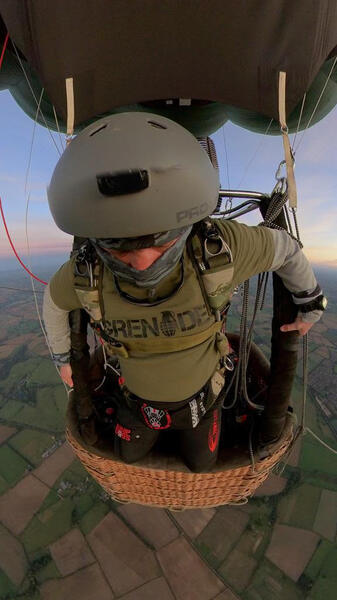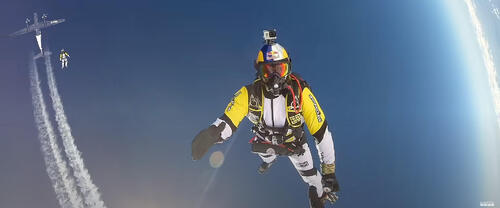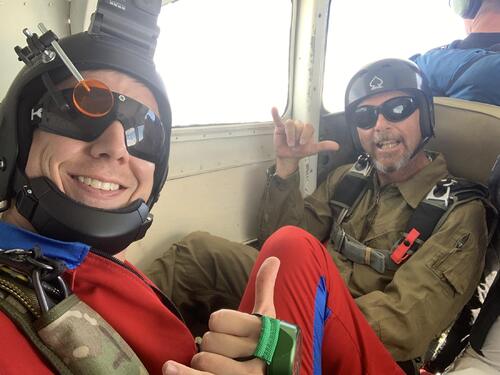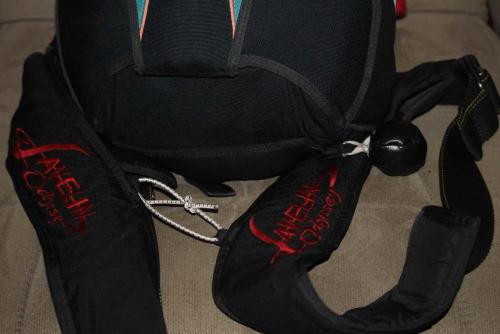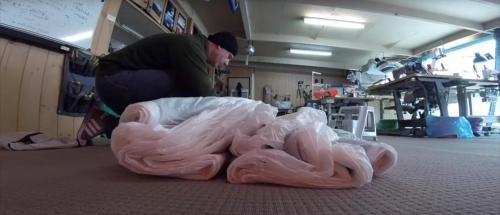This article is about today’s crucial importance of education in Skydiving and Rigging and what part of it are procedures and rules.
“You have to be ready for every situation!”- this is a popular expression lately and it makes perfect sense. But what does it mean, how do we prepare in order to be “ready”, what training is necessary, where do we get it, what knowledge do we need, is the training from our first jump course enough, etc. etc.? All good questions. Here, we are going to answer some of them. Obviously, it all comes down to EDUCATION! The right EDUCATION!
In order to survive a skydive we need- knowledge, skills and experience! There is nothing else we can rely on when it is time to resolve any situation up there than ourselves and what we know. Interestingly, in recent years, the concept of “following procedures and rules” has been pushed through Skydiving more and more and now it wrongly has been assumed as the main way of dealing with difficult situations. “Following procedures and rules” is very important, actually it is extremely important. Following procedures and rules means that certain important things are going to get done in the necessary order. This evidently ensures the safety in skydiving to a big extent. Is that enough? Both, the short and the long answers are -NO.
The definition for “Procedure” is- a series of actions are conducted in a certain order or an established or official way of doing something. It is a term coming from the mechanics, and it works well in the factories. Following procedures there ensures things are done the correct way in order a certain process to be carried out. Skydiving, Rigging, training and education are not manufacturing processes. There simply cannot be procedures that cover what will happen on a jump. Every jump is different to some extent, done by different people, from different altitudes, different airplanes, and with different equipment! Equipment checks, packing procedures, post deployment procedures etc are good examples for procedures we use today. They are just part of the education and should not be mistaken for sufficient good training in Skydiving and Rigging. Also, “Procedures” can and have to change often, when situation requires that, especially in emergencies.
So, what exactly is the difference between Procedures and education- following procedures covers only several things that need to be done in specific situations while good education is what prepares us to resolve a wide range of problems in wide range of different situations. There is a big difference between the two!
Unknown situations, Extreme weather conditions/phenomenon/, Unknown equipment and other factors/mostly human ones/ are important part of the education in Skydiving and standard “procedures” do not cover wide range of what happens in these. The insufficient training in these areas is a reason for a big part of the serious injuries and deaths.
Unknown situations- well they happen, and we must deal with them. It is important to know what can help us. Broken control line on deployment, 3000 ft height, no line twist, steerable canopy and the canopy turns. Do you have to cut away? Yes, there’s many answers, and they all depend on the particular situations. Winds, distance from landing area, main canopy, spot, etc, etc, etc.
Unusual and extreme weather conditions/phenomenon/- looks like a good idea to know how to handle strong wind gusts, turbulence, dust devils, etc. Let us say you are at 2000 ft under a good canopy and there is sudden wave of strong wind- 30-40 kts on the surface. This changes your original plan, but you still must land, nobody stayed up there. What is the approach you need now, can you fly your canopy backwards facing into the wind, what are the implications flying the canopy crosswind? Now your knowledge comes to play.
Unknown equipment. What constitutes unknown equipment? Well, obviously the equipment you do not know, and If you do not know what is in your reserve tray- that makes it new when it’s time to use it. A good example is using MAARD systems. After cutaway, RSL opens your reserve tray and initiates the reserve opening sequence regardless in what position you are, sometimes spinning, spinning on your back etc. Any other position than belly to earth, slightly head up is less favourable for the reserve opening.
What is the difference between untreated Spectra lines /PD reserves/ and treated/stiffer/ Spectra lines?
Other factors/mostly human ones/- yes, very important to know how you would react when you are first time in particular situations. If you lack the necessary time and resources/knowledge/ and you are to deal with situation that you do not know how to resolve, the “freeze, fight or fly” response takes into action, and you could forget even the things you knew.
Nowadays, these factors are sometimes left outside the scope of the things considered important in training and in operations. Again- knowledge, skills and experience is what we need, and only good education and training can provide them. Following standard operating procedures are not enough!
Well, if you create a system to do something- do not be surprised it does it!
It is not a big surprise these factors are important and ignoring them causes problems.
Turns out there is a huge amount that can be done, and education is very important.
“The ability to generate and then select the appropriate course of action is based on the decision maker’s “reading” of the situation—in other words, our ability to assess the situation and predict how it will evolve over the next few seconds. “The more knowledge you have on how things work- better chance of reading the situation. Knowing what is in the reserve container, what the closing sequence is, how and when the MARD works, why the RSL was invented and implemented, what the reserve pilot chute is, can affect the way we read and PERCIEVE emergency situations. These things are important and being familiar with them could save your life. In emergency, people have reacted in different way depending on how they see the situation. As a result, if you know how all the equipment works and what you have, often you do not need to stop, think and then act. Action becomes inbuilt into your reflexes- we jump out of the way of fast approaching car before we even think about it. The same thing happens when you are driving a car- you are not constantly thinking how much input you should apply to different muscles of your limbs in order to maintain a straight line- it is all done subconsciously. You need to think only when you the situation changes, and you need to decide which way you need to turn at an intersection.
The alternative is when you do not know how equipment works in emergency situation- you execute only what you are told- pull some handles, hopefully in the right sequence. If this does not go well- you will need a lot of luck because you do not have time! If we are not sure exactly what is the problem, we need time to realise exactly what is happening, to run different simulations and to decide what course of action to take and execute it. In skydiving- we DO NOT have time. Unfortunately, the current Skydiving “Emergency procedures” diagram-based education here simply fails in many aspects.
All these- “Unknown situations, Extreme weather conditions/phenomenon/, Unknown equipment and other factors/mostly human/ factors” are interrelated. Educating ourselves in one of them, significantly improves the overall outcome as this positively affects all other factors. Let us say we significantly improve our knowledge in “Unknown equipment” /how equipment works/, this significantly improves our ability to handle weather phenomenon/very important/, unknown situations/extremely important/, Human factors/increases the competence confidence loop and anxiety level/ and this improves following procedures as they are understood better.
Getting back to- “You have to be ready for every situation!”- it means that we must be prepared as much as possible for what is coming at us in skydiving. We must know how to prevent and handle situations that have happened before, and we need to be able to tackle even situations that have not happened to us or in general.
Unfortunately to me it looks like we were closer to the right education 30 years ago than today. The reasons for that are complex, however the education providing the necessary knowledge, needs to reflect the modern equipment we have, the already gained experience in skydiving, educational psychology etc.
Luckily, we know all this! We just need to implement what we know again!
It is every skydiver’s personal responsibility to learn how to survive after passing their student status.
Do not wait! Ask! Seek information! Learn! Request a good education, your life depends on it! Ask WHY and HOW! If whoever is teaching you, cannot explain WHY and HOW, ask someone that knows!
Where do we start?
You can start with the manuals for your parachutes and AAD!
Kras Bankov
GLH Systems
Photo, courtesy of “Jump Dogs Display Team”

